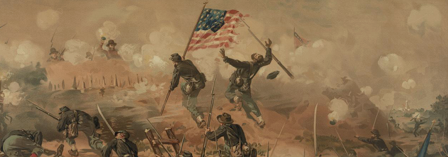Greenville is a modern city located in the foothills of the Blue Ridge Mountains in South Carolina. The city has a great history starting from when it was a village in the 1760s till date. Now regarded as one of the world’s most residents-friendly city, Greenville has had its fair share of wars and destruction.
Like other regions within the south and North Carolina, Greenville was also severely affected by the civil war. This explains why you saw a mentioning of Greenville in the Civil war essay you might’ve read in your school. When talking about The Civil War, historians and patriots like to acknowledge Greenville’s role the damage it faced during that time.
You can better understand the connection between Greenville city and the Civil war by knowing a bit of background history and the great events during the war that led to the city’s destruction.
The Early History of Greenville City
The present-day Greenville was once inhabited by an indigenous tribe called Cherokee. These people were occupying the specific Greenville area so strictly that no colonizer was ever allowed to enter this region.
Later, a wealthy Virginian settler established contacts with the Cherokees and received considerable acres of the Cherokees’ land. He planted the area near the reedy river widely and named his plantation the Great Plains, an area that still retains its name in the modern-day Greenville city.
Shortly after the plantations’ establishment, the American Revolution caused great tensions in South Carolina. There was a war between the Loyalists and Patriots, and the Cherokees supported the former. The Patriots defeated the Loyalists and burnt down the plantation to retaliate against Cherokees, who were, at that time, friends with the plantation owner.
The Pre-Civil War Greenville City
Interestingly, the Greenville we know today was destroyed and built again on three different occasions. However, after the Civil War, people decided to rebuild this city, which later flourished and reached where it stands today.
The first Greenville was where today’s Mississippi stands. The Natchez Indigenes inhabited this area, and the French colonized them after some time. Later, the city’s management changed the new people named this area Mississippi.
After this, the Cherokees populated the second Greenville. This region lies in the South of Natchez’s land. Soon after the American Revolution, these Cherokees’ land became non-operational with no government and management to look after.
This place was never called the Greenville. Rather, its population moved a little to another area where W. Blanton filed for some land and won the case against the USA government.
Blanton established the second Greenville in section four, range eight West. This area is now marked as downtown Greenville. This land flourished and earned very well from its plantations. However, the start of the Civil War marked the destruction of this area.
The Siege of Vicksburg

The start of the Civil War marked a dark period in American history. People were deprived of their political and social rights far and wide. This caused great havoc in almost all parts of the country, both big and small. Unfortunately, Blanton’s Greenville was no exception to the havocs and destruction too. You can understand the Siege of Vicksburg as an event that marked the start of Greenville’s destruction.
This siege was a 2-month prolonged military face-off between the Army of the Tennessee and the Army of Mississippi. For the most part, the action occurred near the Vicksburg city in Mississippi. The Mississippians killed many of the Tennesseans during the face-off. Many were fired and killed by the Mississippi army troops. During the siege, some soldiers from the Union army landed at the Greenville city.
These soldiers avenged the firing by Mississippians on their army units by burning down the entire Greenville buildings, thus destroying the well-established city to a great extent. The destruction, at times, was so immense that the civilians had to seek refuge in plantations around the city.
Later after the war ended, the Mississippians returned home to find their Greenville city in a state of ruins.
Greenville’s Rebuilding Post-Civil War
Luckily, the Mississippians and Greenville’s residents didn’t lose hope after the destructive Civil War Period. Instead, they decided to restore their city’s grace by rebuilding it. This was when the people established the third Greenville, where the major Greenville city area of the present-day lies. People chose the land around three miles from the previously destroyed Greenville area.
The current Greenville lies around the Mississippi River between the famous towns of Memphis and Vicksburg. At the time of building the city, a lady called Mrs. Harriet Blanton Theobald owned much of the land in this area.
She happily donated much of her land for the basic city amenities like the educational, religious, and managerial city buildings. She played a great role in the city’s re-construction and is, therefore, called the Mother of Greenville.
After it’s rebuilt, the city grew strongly. There was more focus on cotton plantations, and the politics of the state flourished too. Over time, the city prospered enough to be where it stands today.
Conclusion
Having undergone so much destruction and facing two great wars, it’s hard to believe how Greenville city stands so strong today. The city simply provided a means for the defeated army troops to vent out their frustration during the Civil War. Just one stay of the Union troop led to this city’s destruction, with everything being burnt down.
Thanks to those who decided to reconstruct it after the war, the city now serves as a center of attraction for many. The new Greenville is a culturally rich region with several historic places and opportunities for new immigrants who want to live here.









